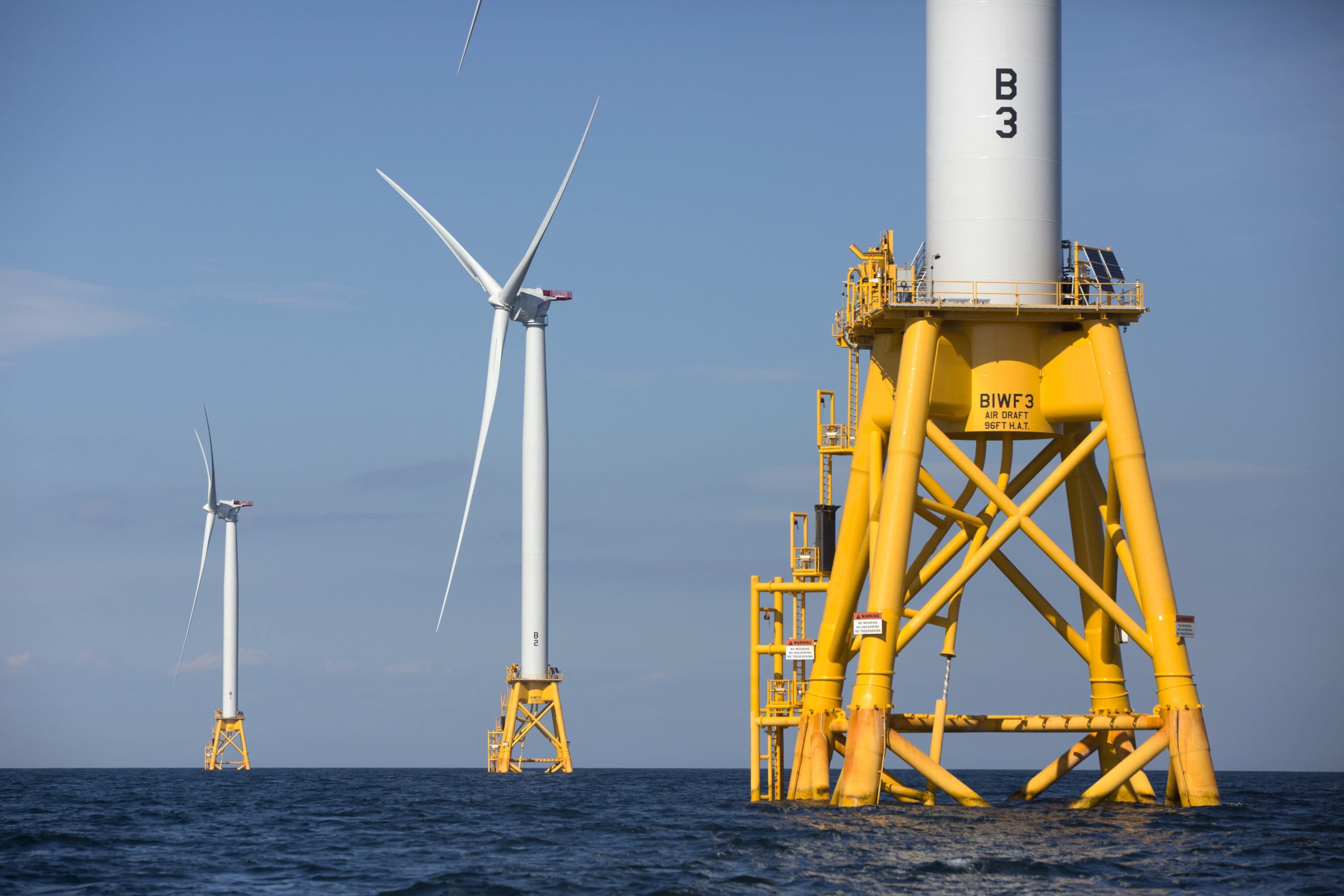Advertisement
Offshore Wind Backers Hope Vineyard Wind Permitting Woes Will End Under Biden

For Massachusetts to meet its 2050 climate change emission goal, the state is going to have to green the grid, replacing fossil fuel power plants with clean renewable energy sources. To do this, the commonwealth is banking on offshore wind.
"Offshore wind is the linchpin of Massachusetts clean energy strategy and critical to our success," said State Sen. Michael Barrett, head of the committee that oversees utilities and energy.
By 2030, developers of offshore wind hope to install over 2,000 turbines in the seas from Massachusetts to North Carolina.
The Vineyard Wind project off Martha’s Vineyard was expected to be the nation’s first utility-size wind farm at sea, but navigating the politics and pioneering the uncertain regulatory process has proven more difficult than expected.
Barrett said he blames the Trump administration for stalling the federal environmental permitting process.
"Boy, I feel badly for the private sector developers here," he said. "They did come to Massachusetts first. Massachusetts beckoned them first, so it's those private sector firms ... they really have been dealt a delay time and again by the Trump people."
Just days before Vineyard Wind expected to get final approval, federal regulators decided to delay the project for 18 months while a cumulative environmental impact of all proposed offshore projects was conducted.
The Responsible Offshore Development Alliance (RODA), which represents the commercial fishing industry, had wanted to slow the permitting process down.
"You know, it’s really, really hard to evaluate tradeoffs between something really important like fishing, and something really important like climate change mitigation," said Annie Hawkins, the group's executive director. "Both of these things need to be addressed together — and they can be — but right now the way we look at it, it’s not happening that way."
Advertisement
The unexpected delay caught Vineyard Wind’s developer by surprise, tossing its plans to pioneer offshore wind into the air.
"We had booked vessels, we had booked factory slots, we had procured equipment," said Vineyard Wind CEO Lars Pedersen. "All of that we basically had to scrap — so it was a significant financial impact on the project."
To address concerns from federal regulators and the fishing industry, Vineyard Wind dramatically reduced the number of turbines it planned to put into the sea. Last month it announced that what it lost in towers, it was going to make up in power with General Electric’s gigantic new turbine called Haliade-X.
Each Haliade-X blade is longer than a football field. At sea, the wind generator stands 260 meters tall — higher than Boston's Prudential Tower.
But the giant turbines required Vineyard Wind to reconsider all aspects of the project. Last month, the company announced it was temporarily pausing its efforts to obtain federal permits.
Days later, just before Christmas, the Department of the Interior said Vineyard Wind would need to start the permitting process all over — from the start. The decision effectively killed the Vineyard Wind project.
Hawkins, of the commercial fisherman organization, was as surprised as anyone.
"It didn’t say it’s paused. It didn’t say, 'We’ll talk to you soon.' It said, 'It's terminated,' and ... there has not been a lot of, you know, additional information from the agency or Vineyard Wind about what exactly that means," she explained. "I think everyone is guessing a little bit what the next administration is gonna do with this."
Vineyard Wind went from leading edge to bleeding edge — the decision left the $2.8 billion project hanging in the air.
CEO Pedersen now hopes President-elect Biden, once in office, will look more favorably on Vineyard Wind's request to temporarily pause the federal process.
"So, we’re in the final stages of conducting that internal review," Pedersen said. "Once that’s completed we will go back to and discuss with them how to proceed with the process."
The incoming Biden administration has made offshore wind part of its ambitious plan to boost economic recovery and combat climate change. And it has a powerful incentive to offer the industry: the economic package that passed just before the new year contains a new 30% investment tax credit for projects in the water before 2026.
Pedersen said hitting that deadline would be "no problem."
"I expect we will have all design and certification ready, we have all our construction contracts lined up, and that means we’ll be producing power to the grid in 2023," he said.
Eric Hines, head of Tufts University’s Offshore Wind program, said that, from an engineering stand point, Vineyard Wind should be good to go.
"Assuming they have their contracts in place, and they begin construction when they’re expecting to, these seem like realistic timelines," Hines said.
Then again, as the recent past has shown, the political winds are far from certain. And as climate change looms and states look to offshore wind to power their futures, the fledgling industry is still on the horizon.
Correction: An earlier version of this story noted that the Prudential Tower is the tallest building in New England. The tallest building in New England is actually 200 Clarendon Street, formerly known as the John Hancock Tower. The post has been updated. We regret the error.
This article was originally published on January 19, 2021.
This segment aired on January 19, 2021.
